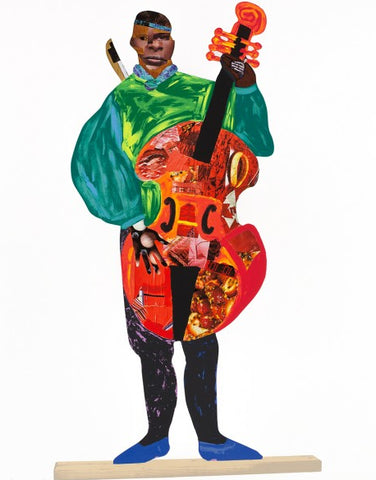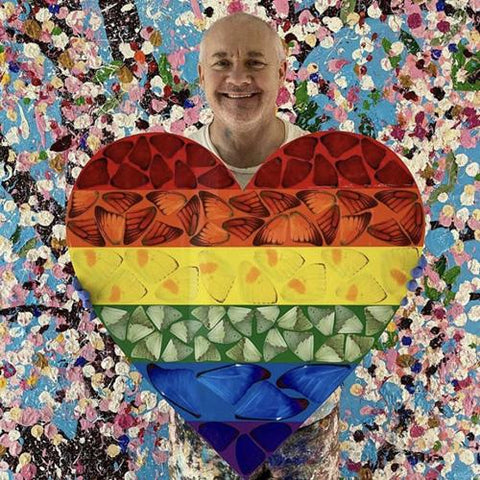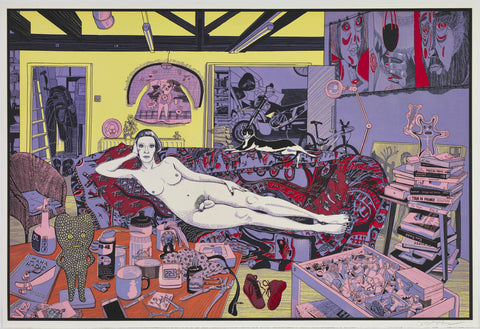The coveted Turner Prize shortlist has been announced. The all woman/ non-binary shortlist consists of four ‘urgent and distinctive voices’, all of whom explore pressing themes of identity, migration, a sense of place and the climate crisis in their art.
Originally established in 1984 to reward the British visual artist who had ‘made the greatest contribution to art in Britain in the previous twelve months’, over time the prize has evolved and now celebrates ‘a British artist for an outstanding exhibition or other presentation of their work in the twelve months preceding.’
Over the years, the prize has courted controversy and attracted its fair share of detractors. But despite being dubbed a ‘poisoned chalice’ by Julian Opie, ‘traumatising’ by Grayson Perry, and ‘a media circus’ by Damien Hirst – the prize still makes headlines and household names.
In today’s blog, we’re revealing all you need to know about this year’s nominees and discussing past winners whose art we’re lucky enough to have at Enter Gallery.
Ingrid Pollard
Having moved from Guyana in the Caribbean to the UK in the 1950s, much of Ingrid Pollard’s work – which spans photography, sculpture, film, collage and sound – explores ideas around Britishness, race, sexuality, as well as our increasingly fraught relationship with the natural world.

Pollard was selected by the Turner Prize jury for her retrospective, Carbon Slowly Turning, at MK Gallery in Milton Keynes, and for her more recent explorations of kinetic sculpture.
The judges praised her work, which they said, ‘for decades has uncovered stories and histories hidden in plain sight.’
At 69, if Pollard is crowned the winner, she will be the oldest recipient of the prize in its history.
Heather Phillipson
Known for what she calls, ‘quantum thought experiments’, Phillipson's work blends poetry, video and sculpture. She has been nominated for her piece that captured the imagination of the nation in 2020 when it appeared on Trafalgar Square’s 4th plinth.
‘The End’ is a sculpture of a swirl of whipped cream with a cherry on top, topped by sinister looking insects.
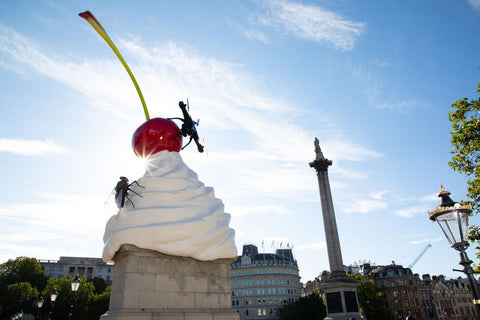
While the sculpture appears sweet at first, as Phillipson explains, it’s anything but:
‘My work is open to misreading at first glimpse, because it’s colourful and brash. It could be an element of seduction, something that draws you in at first glance. You don’t have to spend long with it to realise that it’s not necessarily what it appears to be. It’s definitely not jolly. It’s more disturbing than jolly.’
Interestingly, the fly-like drone perched on the cherry is capturing live footage of the square below. Passers-by can access the feed on their phones and see themselves as viewed through surveillance cameras – a nod to the fact that Trafalgar Square was one of the first places in the UK to get CCTV in 1960.
Speaking of Phillipson, the judges commented that she, ‘splices absurdity, tragedy and imagination to probe urgent and complex ideas.’
Sin Wai Kin
Next on the list is Sin Wai Kin - a non-binary drag performer whose work blends fantasy and reality through storytelling in film, performance, print and writing.
Wai Kin was nominated for their contributions to Frieze London and the British Art Show 9, in particular their film, A Dream of Wholeness in Parts, 2021, which combined ancient Chinese philosophy with music, poetry and contemporary drag.
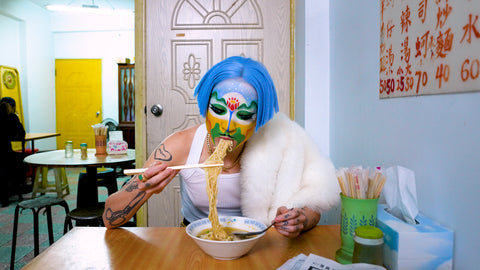
The Turner jury commented that they were impressed by the ‘boundary-pushing nature of Sin's work, and how they deftly translated the visceral quality of their live performances into film.’
Veronica Ryan
Known for tactile sculptures and installations, Veronica Ryan has been nominated for her solo exhibition, ‘Along a Spectrum’ in Bristol, and for her Hackney Windrush Artwork Commission, for which she produced three sculptures of Caribbean fruits made from bronze and marble.
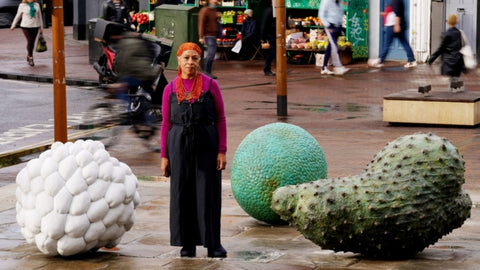
The sculptures are the UK’s first permanent artwork created to honour the Windrush generation and were commissioned to symbolise Hackney council’s commitment to honouring their legacy and contribution.
Originally from Montserrat in the Caribbean, both the sculptures and her solo show examined, ‘environmental and socio-political concerns, personal narratives, history and displacement.’
Ryan's work is commended for its exploration of themes of fragmentation, alienation and the ongoing psychological impact of the pandemic.
Past winners at Enter Gallery
Over the years, Enter Gallery has proudly showcased the works of a number of Turner Prize winners. Firstly, Gilbert and George, who won back in 1986 for their photomontage works.
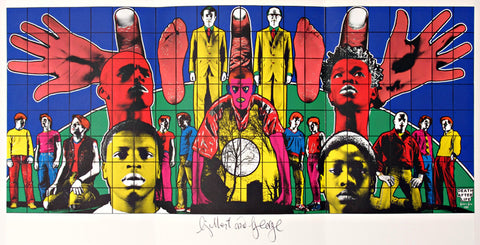
Shop works by Gilbert and George.
Next came Damien Hirst in 1995, for 'Mother and Child Divided' – his controversial exhibit featuring a bisected cow and calf in formaldehyde in a vitrine.
He may well have dubbed the prize, ‘A media circus designed to raise money for the Tate and Channel 4’, but it certainly hasn’t hurt his career. Hirst holds the title as the UKs richest living artist.
Shop works by Damien Hirst
Grayson Perry seized victory in 2003 for his work which ‘employs and subverts the craft form of ceramics.’ Perry accepted the prize from Sir Peter Blake, while dressed as his alter ego, Claire.
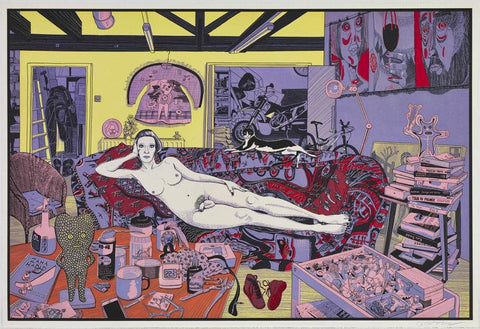
Shop works by Grayson Perry
Lubaina Himid was the most recent of our artists to take home the prize in 2017 for her paintings and installations which address racial politics and the legacy of slavery. At 63, Himid was both the oldest winner of the prize, and the first black woman to claim victory.
Shop works by Lubaina Himid
See the work for yourself
You can experience the work of this year’s nominees for yourself from October at Tate Liverpool.


